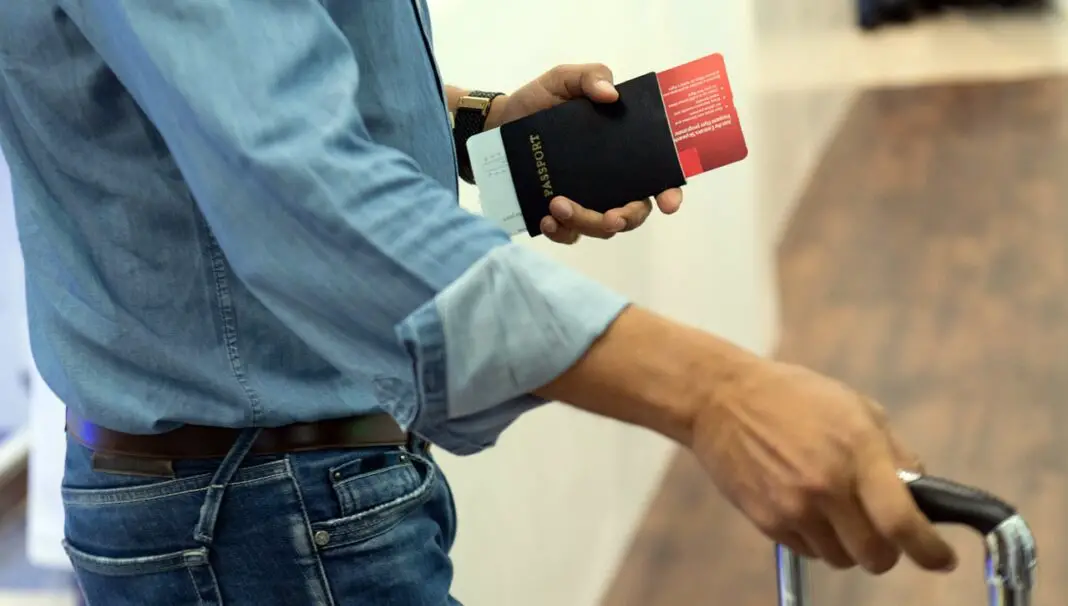International travel is an exciting adventure, offering the chance to explore new cultures, taste different cuisines, and create unforgettable memories. However, navigating airports can often be a stressful part of the journey. Long lines, security checks, and unfamiliar procedures can turn what should be a thrilling experience into a daunting one.
A smooth airport experience can set a positive tone for your entire trip. Proper preparation and a few smart strategies can make all the difference, turning potential hassles into manageable tasks. This guide aims to provide you with practical tips and insights to help you breeze through the airport, allowing you to focus on the excitement of your international travels.
In the following sections, we’ll cover everything from essential pre-trip preparations to navigating security, and from ensuring comfort during your wait to handling unexpected delays. Whether you’re a seasoned traveler or embarking on your first international journey, these tips will help make your airport experience easier and more enjoyable.
Table of Contents
1. Preparation Before the Trip
A. Research and Documentation
One of the most crucial steps in preparing for international travel is ensuring you have all the necessary documentation. Start by checking that your passport is up-to-date and will remain valid for at least six months after your planned return date. Depending on your destination, you may also need a visa. Research the entry requirements for the country you’re visiting and apply for any necessary visas well in advance.
It’s also wise to print and organize all your important documents. This includes your travel itinerary, boarding passes, accommodation details, and any other relevant confirmations. Keeping these documents in a dedicated travel folder can save time and reduce stress at the airport.
B. Packing Smartly
Packing efficiently can significantly ease your airport experience. Aim to pack light to avoid the hassle of checking in bulky luggage. Stick to essentials and plan your outfits based on the weather and activities at your destination. Remember that most airlines have restrictions on the size and weight of carry-on bags, so check these limits before you start packing.
In your carry-on, include travel-sized toiletries, important medications, and a change of clothes. Don’t forget travel adapters if you’re headed to a country with different power outlets. Be mindful of liquid restrictions, typically limiting you to containers of 100ml or less in a clear, resealable bag.
By organizing your documents and packing smartly, you’ll set a positive tone for your trip, making the airport experience much smoother and more enjoyable.
2. Pre-Departure Tips
A. Check-in Online
One of the easiest ways to save time and reduce stress at the airport is to check-in online. Most airlines allow you to check-in 24 to 48 hours before your flight. By doing this, you can select your preferred seat, confirm your meal choices, and even print your boarding pass or download it to your mobile device. Online check-in can also help you avoid long lines at the check-in counters, allowing you to proceed directly to the baggage drop-off or security checkpoint.
B. Arrive Early
For international flights, arriving at the airport at least three hours before your scheduled departure is generally recommended. Arriving early gives you ample time to check in your luggage, clear security, and navigate the airport without feeling rushed. Early arrival is significant during peak travel times when airports are busier than usual.
Arriving early also allows you extra time to handle any unexpected issues, such as long lines, changes in flight schedules, or additional security measures. By giving yourself this buffer, you can start your journey with a sense of calm and preparedness.
By checking in online and arriving early, you’ll minimize stress and ensure a smoother start to your international trip. These simple steps can significantly enhance your overall travel experience, allowing you to focus on the excitement of your upcoming adventure.
3. Navigating the Airport
A. Security Screening
Security screening is an essential part of the airport experience, but it doesn’t have to be a stressful one. Familiarize yourself with the security procedures at your departure airport. Wear easy-to-remove shoes and avoid wearing excessive jewelry or belts that might set off alarms. Keep your liquids, gels, and aerosols in a clear, resealable bag and place them in an easily accessible part of your carry-on.
Before you reach the screening area, be ready to remove your laptop and other large electronics from your bag and place them in a separate bin. Empty your pockets and place all items, including your phone, wallet, and keys, in the provided trays. Following these tips can help you move through security more quickly and efficiently.
B. Understanding Airport Signage
Airports can be large and confusing, especially if you’re unfamiliar with the layout. Take a moment to familiarize yourself with the airport signs and symbols. Most airports provide maps and directories, which you can often find on their websites or in mobile apps. These resources can help you locate important areas such as check-in counters, security checkpoints, gates, restrooms, and lounges.
Pay close attention to the information screens throughout the airport that display flight details, including gate numbers and boarding times. If you’re ever unsure of where to go, don’t hesitate to ask airport staff for directions. They are usually very helpful and can guide you to your destination.
By preparing for security screening and understanding airport signage, you can navigate the airport with confidence and ease. These steps will help ensure that your time at the airport is as smooth and stress-free as possible.
4. Comfort and Convenience
A. Airport Lounges
Airport lounges can be a haven of comfort and relaxation amidst the hustle and bustle of a busy terminal. These lounges offer a range of amenities, including comfortable seating, complimentary food and beverages, Wi-Fi access, charging stations, and even shower facilities. Accessing an airport lounge can make a long layover or delay much more bearable.
There are several ways to gain access to airport lounges. Some credit cards offer complimentary lounge access as a perk. You can also join a lounge membership program like Priority Pass, which provides access to a wide network of lounges worldwide. Additionally, many airlines offer lounge access to their premium passengers or frequent flyer program members. Even if you don’t qualify for free access, most lounges offer day passes for a fee, which can be well worth the cost for the comfort and convenience they provide.
B. Staying Connected
Staying connected while at the airport is essential for keeping track of your flight status, communicating with friends and family, and passing the time. Most airports offer free Wi-Fi, although the quality and speed can vary. If reliable internet access is a priority, consider investing in a portable Wi-Fi device or an international SIM card, especially if you’ll need connectivity throughout your trip.
Keeping your electronic devices charged is equally important. Many airports have charging stations or power outlets available in the seating areas. Carrying a power bank can also be a lifesaver, ensuring that your devices remain powered up even if you can’t find an available outlet.
By taking advantage of airport lounges and ensuring you stay connected, you can significantly enhance your comfort and convenience during your time at the airport. These strategies help transform potentially stressful waiting periods into opportunities for relaxation and productivity.
5. Immigration and Customs
A. Completing Necessary Forms
Upon arriving at your international destination, you will need to go through immigration and customs. This process often involves completing several forms, such as immigration arrival cards and customs declarations. These forms typically ask for information about your trip, such as your flight details, duration of stay, and address of your accommodation.
To expedite this process, have your travel documents readily available, including your passport, visa (if required), and any other relevant paperwork. Fill out the forms accurately and legibly to avoid any delays or misunderstandings. Some countries may offer electronic forms that can be filled out online before you arrive, so check the requirements of your destination in advance.
B. Understanding Customs Regulations
Each country has its own set of customs regulations that dictate what items you can bring in and out of the country. Familiarize yourself with these regulations to avoid any issues at the border. Commonly restricted items include certain foods, plants, and large amounts of cash. There may also be limits on the quantity of alcohol and tobacco products you can bring.
If you are carrying any items that need to be declared, make sure to do so on your customs declaration form. Failure to declare items can result in fines or confiscation. It’s always better to declare and be safe rather than risk penalties.
When you approach the customs desk, have your completed declaration form and passport ready. Be prepared to answer any questions the customs officer may have about your luggage and the items you are bringing into the country.
By completing necessary forms accurately and understanding customs regulations, you can ensure a smoother transition through immigration and customs. This preparation helps to minimize delays and potential issues, allowing you to start enjoying your trip as soon as possible.
6. Dealing with Delays and Cancellations
A. Knowing Your Rights
Delays and cancellations are an unfortunate reality of air travel, but it’s essential to know your rights as a passenger. Depending on the circumstances, you may be entitled to compensation or assistance from the airline. Familiarize yourself with the airline’s policies regarding delays and cancellations, as well as any relevant regulations or laws that apply to your situation.
In many cases, if your flight is delayed by a certain amount of time or canceled altogether, the airline may offer compensation in the form of vouchers, refunds, or rebooking onto another flight. If you’re unsure about your rights or feel that you’re not being adequately compensated, don’t hesitate to speak to airline staff or seek assistance from passenger advocacy organizations.
B. Staying Informed
During times of delays or cancellations, staying informed is crucial. Keep an eye on the departure boards and listen for announcements regarding your flight. Many airlines also offer real-time updates through their mobile apps or website, allowing you to track the status of your flight from anywhere.
If your flight is delayed overnight or for an extended period, the airline may provide accommodation, meals, or transportation vouchers. Check with airline staff for information on what assistance is available and how to claim it. Additionally, consider reaching out to the airline’s customer service hotline or social media channels for assistance, as they may be able to provide alternative travel arrangements or further guidance.
By knowing your rights and staying informed during delays and cancellations, you can minimize the inconvenience and frustration of disrupted travel plans. While delays and cancellations are never pleasant, being prepared and proactive can help you navigate these challenges more effectively.
7. Health and Safety Tips
A. Staying Healthy
Maintaining your health during international travel is essential for enjoying your trip to the fullest. Long flights and changes in climate and environment can take a toll on your body, so it’s important to prioritize self-care. Stay hydrated by drinking plenty of water throughout your journey and limit your intake of caffeine and alcohol, which can contribute to dehydration.
Additionally, try to eat nutritious meals and snacks to keep your energy levels up and support your immune system. Pack healthy snacks like fruits, nuts, and granola bars to have on hand during your flight. Consider bringing along a reusable water bottle to refill at airport water stations and onboard the aircraft.
To combat the effects of long periods of sitting, try to move around and stretch periodically during your flight. Simple exercises like ankle rolls, leg lifts, and shoulder rolls can help improve circulation and reduce stiffness. Consider wearing compression socks to help prevent swelling and reduce the risk of deep vein thrombosis (DVT).
B. Personal Safety
While traveling internationally, it’s essential to prioritize your personal safety and security. Keep your belongings secure at all times, especially in crowded areas like airports and tourist attractions. Consider using a money belt or hidden pouch to carry your valuables, and avoid displaying expensive items like cameras or smartphones in public.
Be aware of your surroundings and trust your instincts if something feels off or uncomfortable. Stay vigilant against common travel scams, such as fake taxi drivers, distraction techniques, and pickpocketing. If you’re unsure about the safety of an area or activity, seek advice from local authorities or trusted sources.
Before you travel, research any health and safety advisories for your destination and take appropriate precautions. This may include getting vaccinated, taking medication to prevent illnesses like malaria or altitude sickness, and following recommended safety guidelines. By prioritizing your health and safety, you can enjoy a worry-free and fulfilling travel experience.
Conclusion
Navigating international airports can be a daunting task, but with careful preparation and the right strategies, you can make the experience much smoother and more enjoyable. By following the tips outlined in this guide, from preparing your documents and packing smartly to navigating security and customs with ease, you can minimize stress and maximize comfort during your travels.
Remember to stay informed about your rights as a passenger, especially in the event of delays or cancellations, and prioritize your health and safety throughout your journey. By taking proactive steps to stay healthy, secure your belongings, and be aware of your surroundings, you can enjoy peace of mind as you explore new destinations.
International travel is an adventure filled with excitement and discovery, and the airport experience is just the beginning. With the tips provided in this guide, you can start your journey on the right foot, ready to embrace all the wonders that await you at your destination. So pack your bags, double-check your documents, and get ready for an unforgettable adventure. Bon voyage!





